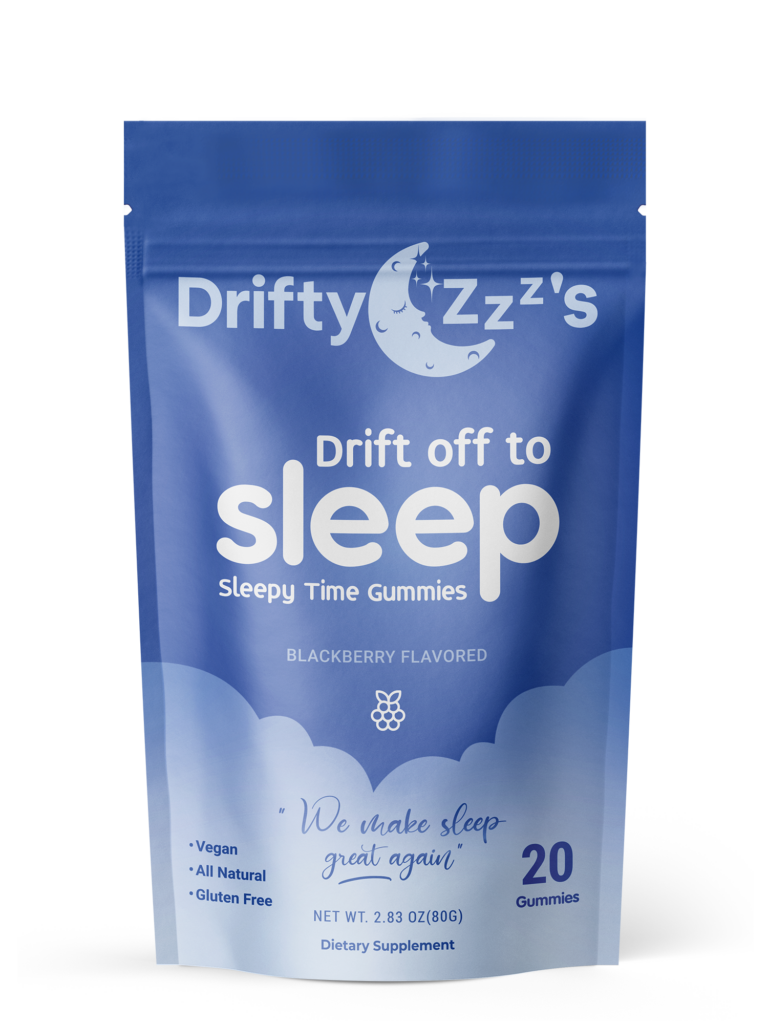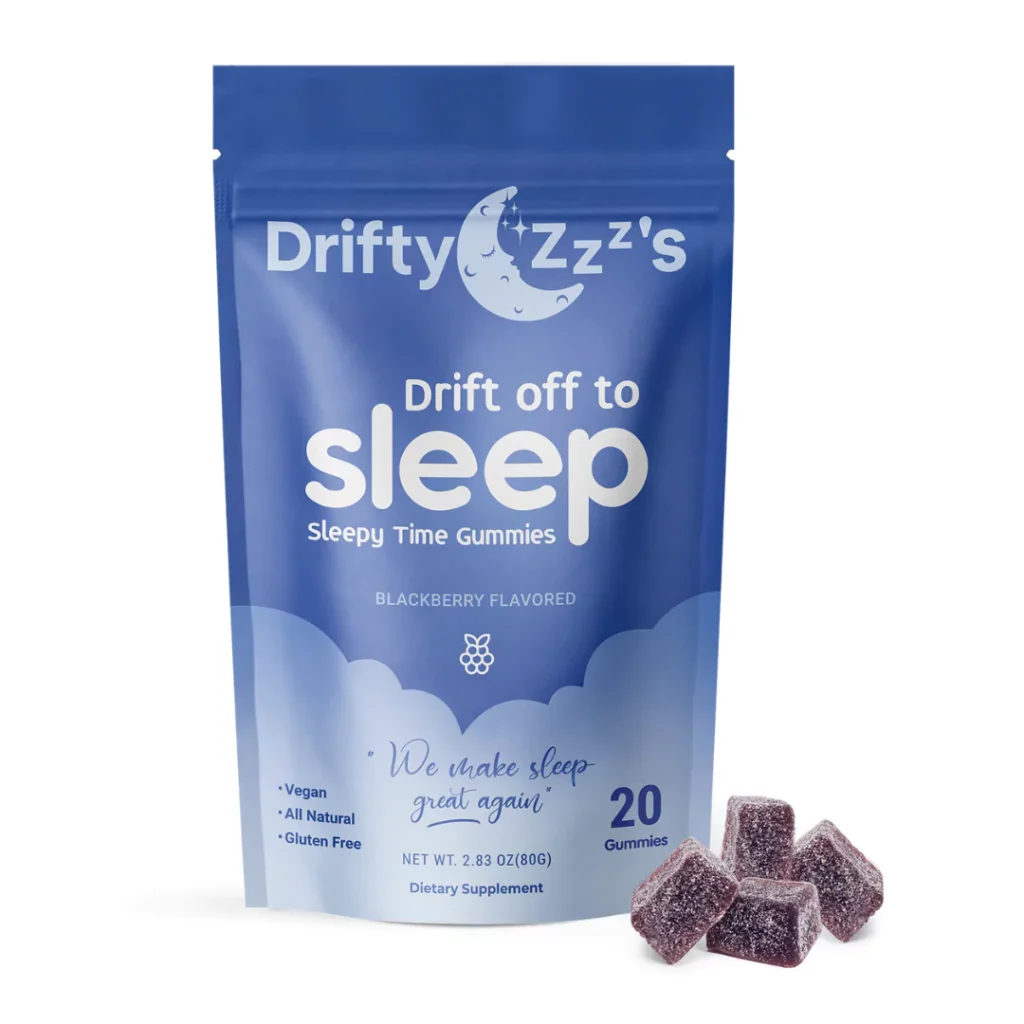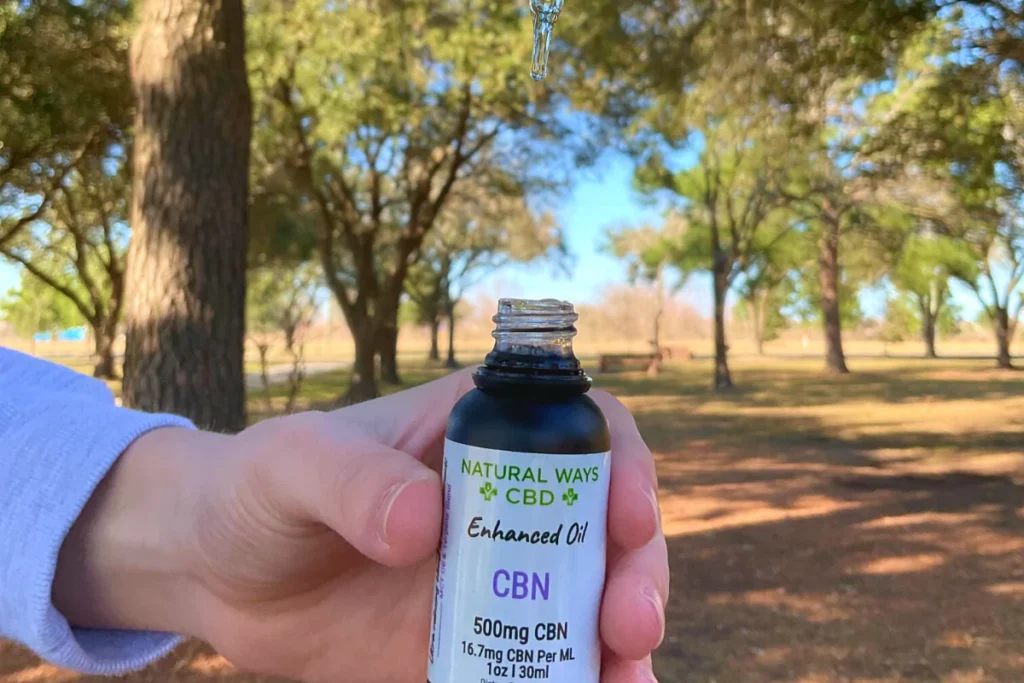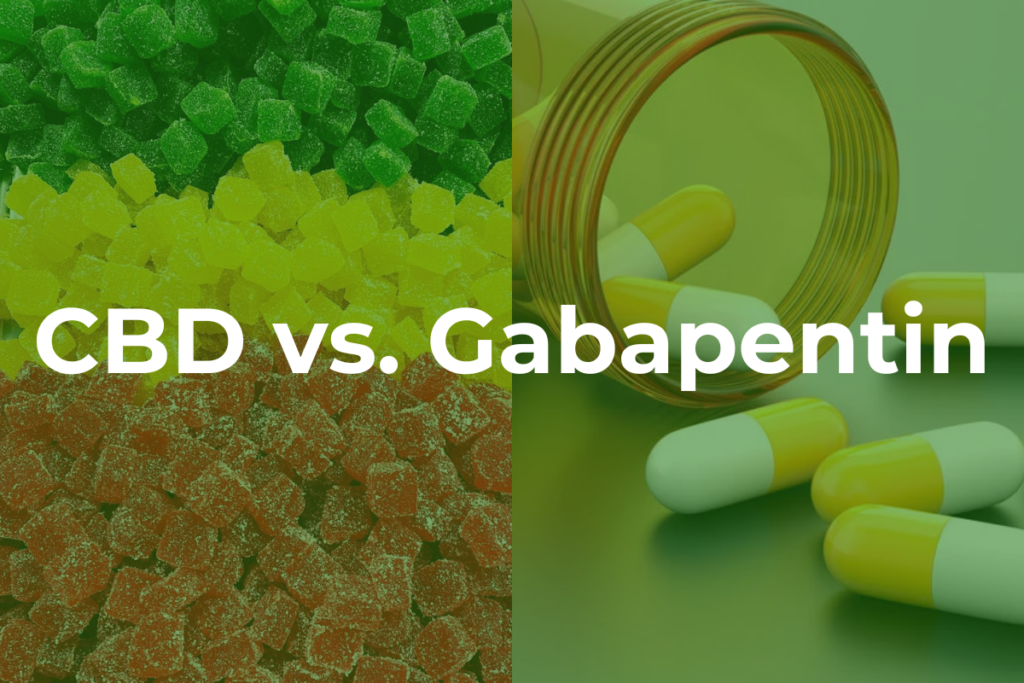Cannabinol (CBN) is an alt cannabinoid that’s become a popular natural supplement for sleep and insomnia, with many people using it to replace melatonin and other prescription and OTC medications.
But along with promoting rest and relaxation, research and anecdotal evidence suggest CBN may also have therapeutic potential for pain.
In this article, we’ll explore CBN’s potential benefits for pain, how it works, and how to use it for the best results.
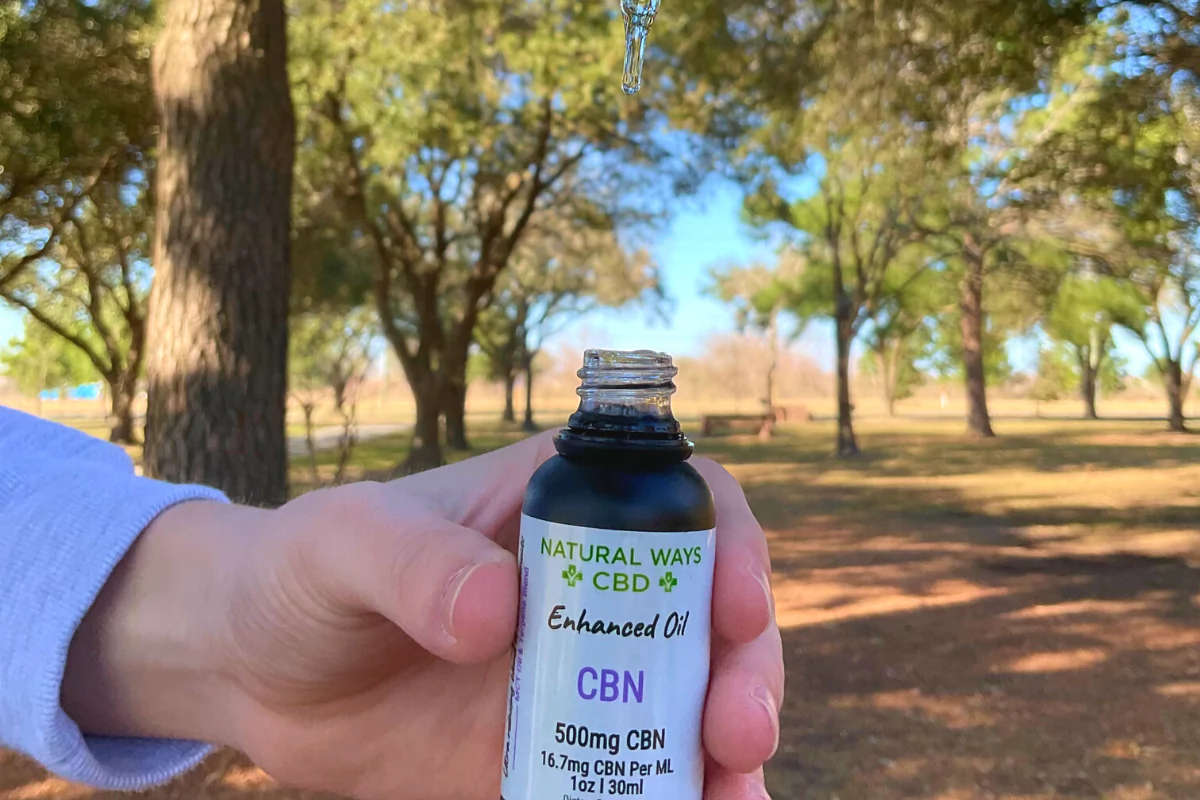
What is CBN?
Cannabinol, or CBN, is a naturally occurring cannabinoid in the hemp plant (hemp is cannabis with less than 0.3% THC by dry weight).
CBN is a minor cannabinoid, meaning it only occurs in hemp in very small amounts. Contrast this with CBD and THC, both of which are very abundant in hemp.
Although it was discovered by scientists nearly a century ago, CBN went largely under the radar until people noticed that CBN-heavy THC flower produced a deeper, drowsier high than regular THC flower.
This led some people to believe that CBN had sedating effects, and as a result, CBN is widely used for sleep and insomnia.
Some of CBN’s fame as a sleep aid may be due to marketing. However, there is scientific and anecdotal evidence to suggest it may indeed have relaxing and sedating effects.
The Effects of CBN: How Does It Make You Feel?
Anecdotal evidence suggests CBN has sedating, mildly psychoactive effects. Most people compare CBN’s effects to those of THC, but say it’s only about one-fourth as strong.
Other CBN users say that it has very little psychoactive effect – it varies from person to person. Either way, most people who use CBN report that it promotes drowsiness and relaxation, with some even reporting that it has similar therapeutic benefits for pain that cannabinoids such as CBG do.
Can CBN Help With Pain?
Scientific research on CBN for pain is limited, however, studies so far suggest CBN may have anti-inflammatory and analgesic (pain-reducing) properties, especially when combined with CBD. More clinical research on CBN is needed to understand how well it works for pain.
A 2016 study from University of Massachusetts researchers found CBN may have anti-inflammatory properties [1].
A 2021 study by researchers in Brazil found that CBN interacts with the CB2 receptors in the endocannabinoid system, which are capable of inhibiting pain and inflammation sensations [2].
Research out of the University of British Columbia, Canada, found that CBN reduces muscle pain in rats. The study also found that a 1:1 combination of CBD and CBN was more effective for pain than CBN alone [3].
In addition to the formal research, firsthand accounts suggest CBN may be beneficial for various forms of discomfort, including sciatic pain, muscle pain, and general inflammation.
Some people even say CBN is better than CBD for this purpose — this is likely due to the fact that CBN also brings deep mental relaxation, in addition to being physically soothing.
CBN for Pain: How It Works
We mentioned that CBN affects the CB2 receptors. These receptors are a part of your endocannabinoid system (ECS), with which CBN and all other cannabinoids work to render benefits.
The ECS is a receptor system responsible for keeping your body in a state of balance. The ECS does this by regulating your vital functions — it influences every system your body uses for moment-to-moment functioning.
Among many other things, the ECS regulates your pain and inflammatory responses.
There are two main types of receptors found in the ECS:
- CB1 receptors, which produce mental effects upon interacting with cannabinoids
- CB2 receptors, which produce physical effects upon interacting with cannabinoids
CBN is able to interact with both types of receptors, thereby rendering mental relaxation and a mild head high (via CB1) while promoting therapeutic relaxation (via CB2), and therefore having the potential to benefit pain and inflammation.
CBN for Pain: Side Effects & Safety Considerations
While CBN is very beneficial, it may cause the following side effects:
- Tiredness
- Dizziness
- Grogginess
- Nausea
Many people only feel some of the side effects of CBN, and others don’t feel any at all. Still, they’re important to be aware of.
CBN vs. CBD vs. CBG for Pain: How Do They Compare?
We’ve discussed how CBN works for pain, but how does it stack up to cannabidiol (CBD) and cannabigerol (CBG), two other naturally-occurring cannabinoids?
CBN vs. CBD for Pain
Like CBN, CBD is a naturally-occurring cannabinoid in the hemp plant. The primary difference between CBN and CBD lies in their effects.
CBD has the benefit of being able to promote mood and relaxation without getting you high – this means it can be used throughout the day for discomfort. CBN, on the other hand, will get you high and reduce cognitive functioning, which isn’t ideal if you have work or class during the day.
There is research suggesting that both CBN and CBD may have anti-inflammatory and analgesic effects. CBD is currently backed by more research showing its benefits for physical discomfort than CBN, but this doesn’t necessarily mean it’s the better choice.
The lack of research makes it difficult to definitively say which cannabinoid is more beneficial. But as a rule of thumb: if you need or want the head effect, CBN is better for pain, whereas if you don’t, go with CBD.
CBN vs. CBG for Pain
As with CBD, the primary difference between CBN and CBG is in how they make you feel. Both options have been shown by research to have therapeutic potential in this area, and they haven’t been scientifically compared. As such, we recommend choosing between them on the basis of the effects you want.
While CBN’s direct effects on discomfort may not be as strong as CBG’s, its mildly psychoactive and sedative properties make it beneficial if you’re dealing with anxiety and sleep issues, which commonly accompany pain.
CBG, on the other hand, is a robust therapeutic option for pain. Significant amounts of scientific research and anecdotal evidence suggests that it may have analgesic and anti-inflammatory properties.
CBG’s uplifting effects mean it may also help with energy and focus, both of which may be affected by discomfort.
How to Take CBN for Pain: Product Types
There are many different types of CBN products for pain, and each has its upsides and downsides. In this section, we’ll discuss each consumption method so you can choose the one that’s right for you.
For reference, bioavailability refers to the percentage of the cannabinoids you ingest that your body can use.
Edibles
Average Bioavailability: 10-20%
Starts Working In: 45 minutes to 1 hour
The most common type of CBN edibles are CBN gummies. Edibles are fixed-dose – since each gummy will contain the same amount of CBN, this is an ideal consumption method if you want to take the same amount each time.
Since edibles have to pass through your digestive system, however, they take anywhere from 45 minutes to 1 hour to begin having an effect.
Capsules
Average Bioavailability: 10-20%
Starts Working In: 45 minutes to 1 hour
CBN can also be taken in a capsule form. Capsules are pretty much identical to edibles — they offer a fixed-dose consumption method, and they’re digested so they take the same amount of time to start working.
One thing to be aware of with capsules is that they can’t easily be split if you need to take a smaller dose of CBN than is contained in a single piece.
Oil
Average Bioavailability: 20-30%
Starts Working In: 10 to 15 minutes
CBN can be taken sublingually (under the tongue) in an oil form. Sublingual consumption delivers cannabinoids straight to your bloodstream via the blood vessels in the bottom of your mouth.
For this reason, CBN oil acts more quickly and has a higher bioavailability than digestion-based oral consumption forms.
Oils are an ideal choice if you need to take very small or precise doses of CBN. The metered dropper that comes in most oil products allows you to measure your dosage down to the drop.
Flower and Vapes
Average Bioavailability: 50-60%
Starts Working In: 5 to 10 minutes
There are many high-CBN strains of hemp flower, as well as CBN vapes. Inhalable consumption is both faster-acting and higher in bioavailability than sublingual consumption (oils). This is because, when inhaled, CBN is delivered directly to your lungs via smoke or vapor.
There is an obvious health risk to inhalable methods — you have to decide if the higher bioavailability and quicker onset time are worth it.
Additionally, if you need a very precise dose, inhalable CBN consumption isn’t ideal, as it’s hard to measure the amount of cannabinoids you’re getting in each puff.
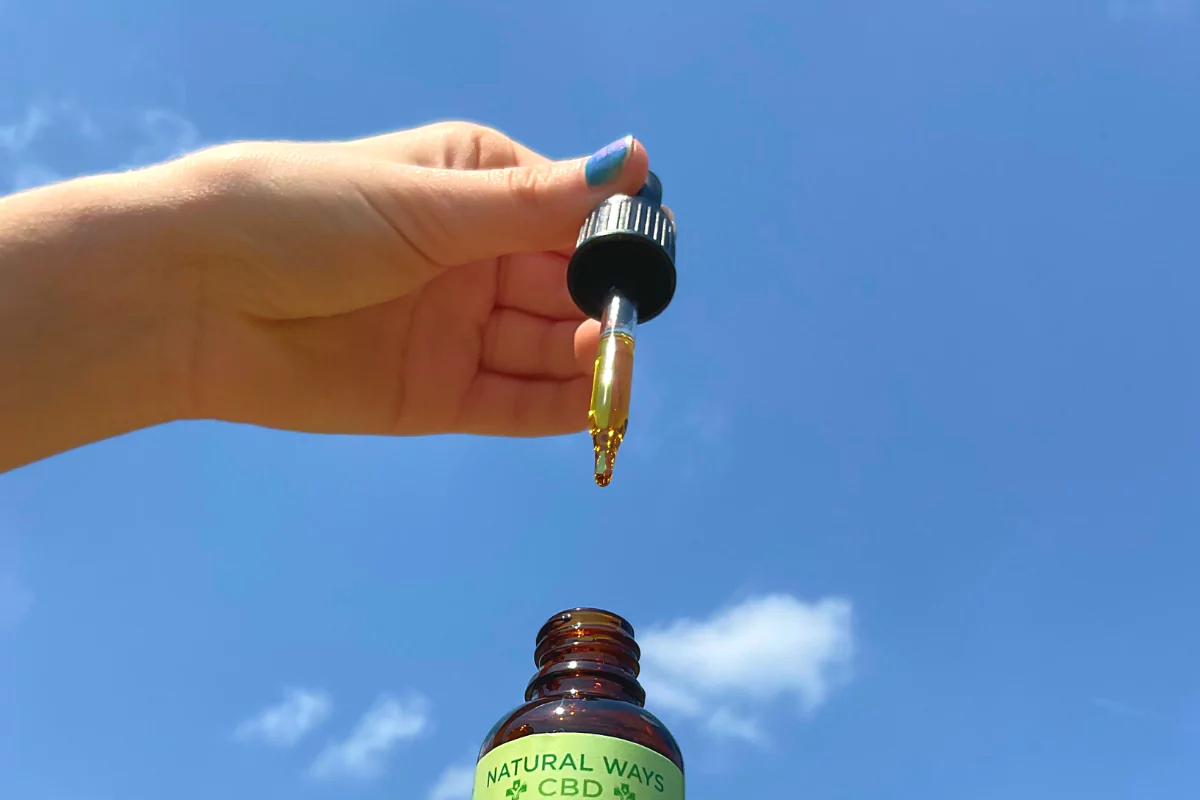
CBN Dosage for Pain
Because CBN will get you high, it may be overwhelming if you’re a first-time user.
That’s why, starting out, we recommend taking a small dose of CBN and working your way up, unless you’re already experienced with psychoactive cannabinoids.
You can measure your starting dose with this formula:
(0.05) x (your body weight in lbs.) = your daily dose of CBN for pain in mg.
Once you’ve used this dose for a few days, you can slowly work your way up (or down) depending on how you feel and how it’s working for you.
Conclusion: A Natural Pain Supplement?
Like CBG, CBN is a minor cannabinoid that may have therapeutic potential for addressing pain and inflammation.
Although anecdotal evidence is promising, more research on CBN for pain is needed — specifically, research done on humans — before we know how reliable it is for treating physical discomfort.
Still, CBN may provide an alternative to CBD and CBG if you’re looking for mild psychoactive effects in addition to physical relaxation, but don’t want something quite as powerful as delta 8 or delta 9 THC.
CBN for Pain: Frequently Asked Questions
Here are some questions our customers frequently ask us about using CBN for pain.
Is CBD or CBN better for pain?
Neither CBD or CBN is better for pain – it all comes down to your personal preference. CBD renders mild effects and is best at supporting overall balance, whereas CBN is sedative and may be better for nighttime support.
Is CBN or CBG better for pain?
Neither CBN nor CBG is necessarily a superior cannabinoid for pain. Rather, they both render physical relaxation, but with noticeably different mental effects. CBN is drowsy and sedating, whereas CBG is uplifting and energizing.
Is CBN a pain reliever?
Although more research on CBN’s efficacy as a pain reliever is needed, preliminary studies and anecdotal evidence suggest it may have the potential to address pain and inflammation.
Does CBN reduce inflammation?
There is a limited amount of research that suggests CBN may have anti-inflammatory properties, however, it’s not an FDA-approved anti-inflammatory drug and more studies are needed.
Who should not take CBN?
There are three main reasons we’d discourage using CBN: if you are pregnant or breastfeeding, if you’re already taking prescription medications that affect how cannabinoids are metabolized (and vice versa), or if you don’t want to feel any sort of a head high.
Sources
[1] Zurier, Robert B, and Sumner H Burstein. “Cannabinoids, inflammation, and fibrosis.” FASEB journal : official publication of the Federation of American Societies for Experimental Biology vol. 30,11 (2016): 3682-3689. doi:10.1096/fj.201600646R
[2] Campos, Raquel Maria P et al. “Cannabinoid Therapeutics in Chronic Neuropathic Pain: From Animal Research to Human Treatment.” Frontiers in physiology vol. 12 785176. 30 Nov. 2021, doi:10.3389/fphys.2021.785176
[3] Wong, Hayes, and Brian E Cairns. “Cannabidiol, cannabinol and their combinations act as peripheral analgesics in a rat model of myofascial pain.” Archives of oral biology vol. 104 (2019): 33-39. doi:10.1016/j.archoralbio.2019.05.028



